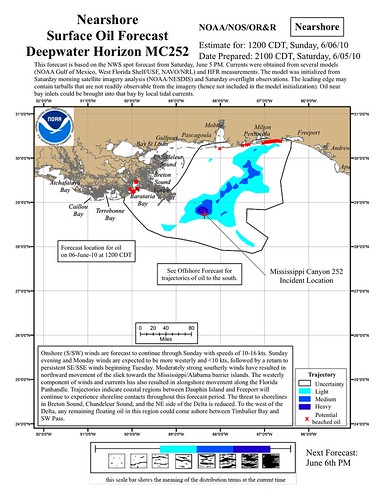Roberto Diaz de Villegas WFSU-TV
A little more than a month ago, I had just finished a documentary. It’s one of those things where you put a lot of work in and then it’s just done, and you think you’ll have some time to tie up some loose ends. I had been so busy finishing the program that I was only peripherally aware that the Deepwater Horizon oil rig had exploded and that possibly the greatest ecological disaster in our nation’s history was unfolding. I didn’t know that my next project was already lining itself up, and that it would take up most of my working hours for months to come.
A month after I first stepped into a salt marsh (and got stuck in mud and fell onto my rear), oil is just starting to reach Florida. Tarballs are as close as Grayton Beach, and you have to wonder how much longer it’ll be until the sites we’ve been visiting in St. Joe’s Bay and Alligator Harbor will be affected. Oystermen in Apalachicola are scrambling to harvest as many oysters as possible, and those who can are canceling hotel and rental reservations across the panhandle.
We should be going back “in the grass” and “on the reef” this week. Weather got in our way last week as Dr. Kimbro had to call off location scouting in Alligator Harbor, and it’s been stormy all weekend (Dr. Kimbro’s first post will come tomorrow, along with some video of the first day of his study). Hopefully we can get some favorable conditions, I’d like to see these places as they are as much as I can, while I can.

